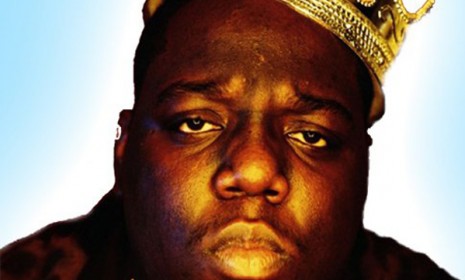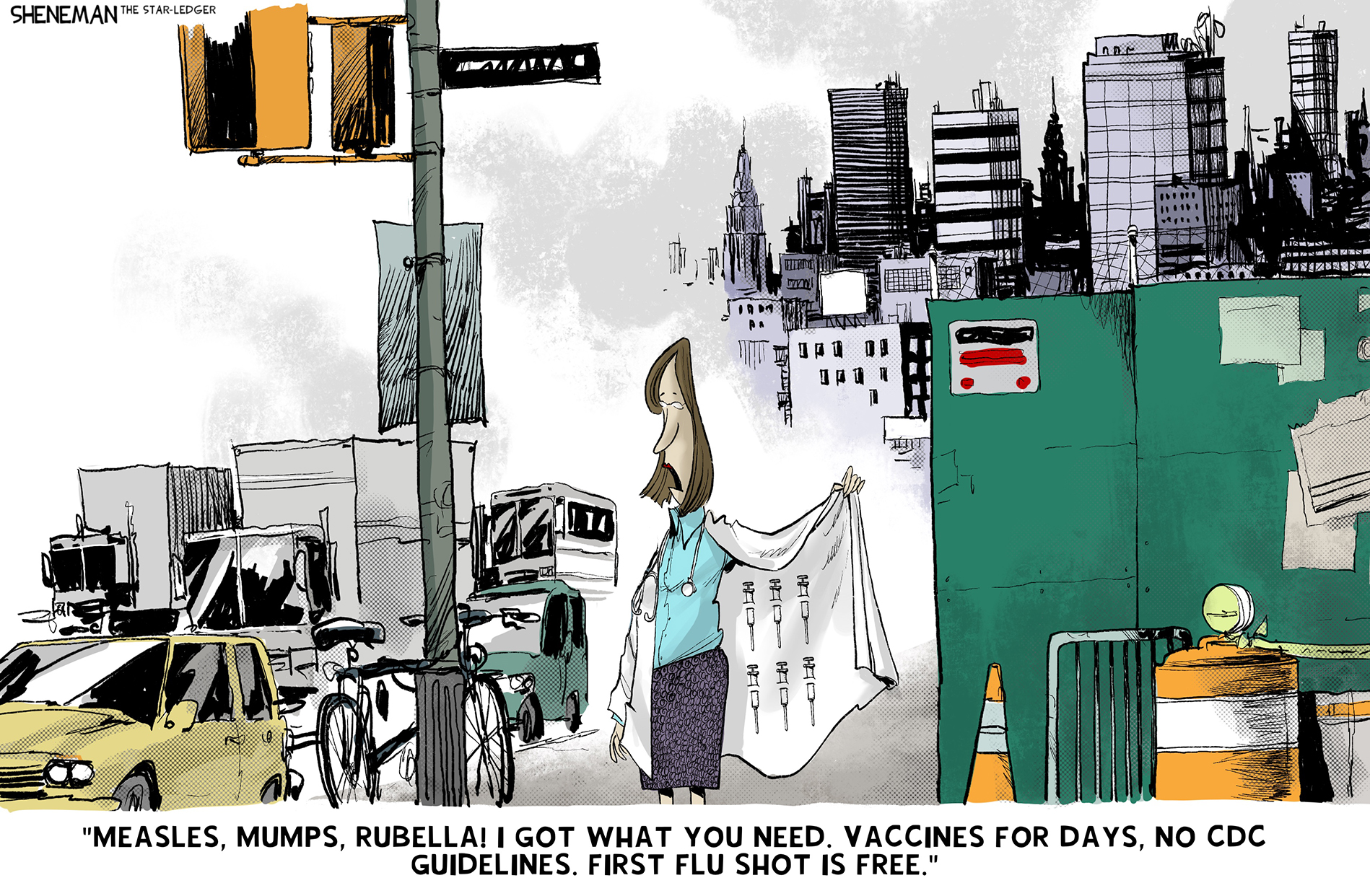What the brains of freestyle rappers look like
How are emcees able to spit out lyrics on the fly? Curious researchers enlisted an fMRI scanner to find out

The late Brooklyn rapper Christopher Wallace, better known as The Notorious B.I.G., had the rare ability to craft entire songs in his head on the spot. "More often than not, how well a rapper navigates this stream-of-conscious realm is the yardstick by which talent is measured," says Nic Halverson at Discovery News. Though Biggie, one of the best emcees ever, made it look easy, the act of improvising entire verses on the fly, or freestyling, is a mysteriously daunting skill. That's why researchers at the National Institute on Deafness and Other Communication Disorders (NIDCD), a part of the National Institutes of Health, set out to explore what happens to a rapper's brain when he's spontaneously stringing together words. Here, a concise guide to the experiment:
How did this union of hip-hop and science come about?
About four years ago, the publication of a study where the brains of improvisational jazz musicians were hooked up to scanners caught the eye of Daniel Rizik-Baer, a hip-hop enthusiast with a background in social work. He contacted the study's co-author, Dr. Allen Braun of the NIDCD, and pitched a new idea: Why not do the same for freestyle rappers? The resulting study, "Neural Correlates of Lyric Improvisation: An fMRI Study of Freestyle Rap," tackles a piece of a "larger puzzle," said Braun. Namely: "What is the hallmark of the creative process?"
The Week
Escape your echo chamber. Get the facts behind the news, plus analysis from multiple perspectives.

Sign up for The Week's Free Newsletters
From our morning news briefing to a weekly Good News Newsletter, get the best of The Week delivered directly to your inbox.
From our morning news briefing to a weekly Good News Newsletter, get the best of The Week delivered directly to your inbox.
What happened in this study?
The team enlisted 12 freestyle rap artists from the Washington D.C. and Baltimore areas and hooked them up to magnetic resonance imaging (fMRI) machines, which measure oxygen levels in the brain and use blood flow to pinpoint which areas are active at a given point in time. The local rappers were given an eight-measure bar and lyrics to memorize, and were told to recite those lyrics while hooked up to the fMRI scanner. Then they were told to freestyle over a beat.
What did their brains look like?
No matter what they were rapping about, their brains "activated differently during the improvised flow versus the memorized lyrics," says Stephanie Pappas at LiveScience. When subjects were freestyling, the medial prefrontal cortex — an area associated with organizing and integrating information — showed an increase an activity. Meanwhile the dorsolateral region, which helps with "self-control, self-monitoring, and self-censoring," showed a decrease in activity, adds Pappas. (This area became more active when the rappers were reciting memorized lyrics.) Also active while the subjects freestyled were the brain areas associated with language and motor control ("no surprise given the rappers had to think of words and produce them with the muscles of the mouth and jaw"), and the amygdala, which is the brain's center for emotional activity.
A free daily email with the biggest news stories of the day – and the best features from TheWeek.com
What does that mean?
"Like jazz musicians, the rappers' brains were paying less conscious attention to what was going on but had strong action in the area that motivates action and thought," says Sarah Zielinksi at NPR. But unlike jazz musicians playing instruments, the left hemisphere of the brain — where language is processed for most right-handed people — demonstrated a dramatic increase of activity. In other words, says Jon Bardin at the Los Angeles Times, "high-level executive function is actively bypassed to allow for a more natural, spontaneous output of language" — the brain essentially turns off its own censors. There's an "absence of attention," said Braun. "When the attention system is partially offline, you can just let things fly and let things come without critiquing, monitoring, or judging them."
Take a look at a 17-year-old Christopher Wallace freestyling here (Warning: Contains strong language):
Sources: Discovery News, LiveScience, Los Angeles Times, NPR (2)
-
 Political cartoons for December 9
Political cartoons for December 9Cartoons Tuesday's political cartoons include black market vaccines, FIFA prizes, and drone deliveries
-
 How dangerous is the ‘K’ strain super-flu?
How dangerous is the ‘K’ strain super-flu?The Explainer Surge in cases of new variant H3N2 flu in UK and around the world
-
 Who is The Liz Truss Show for?
Who is The Liz Truss Show for?Talking Point Former PM’s new weekly programme is like watching her ‘commit a drive-by on herself’